List of Authors
>>About this blog
Recent blog post
|
[Shiraji]
Nov. 13, 2015 09:00
Since the reclaimed alley of the Ryuka River is the ward boundary between Chiyoda-ku and Chuo-ku, this time we will walk along the Sotobori-dori St. from the estuary where the Ryuka River connects to Nihonbashi.
There is no road along the Nihonbashi River to Tokiwa Bridge, even though it is not well-maintained along the river, so you will walk along Sotobori-dori St.

After Tokiwa Bridge, the Nihonbashi River turns greatly to the left, and the ward border with Chiyoda-ku crosses Ichiishi Bridge to become the former Soto Horikawa.
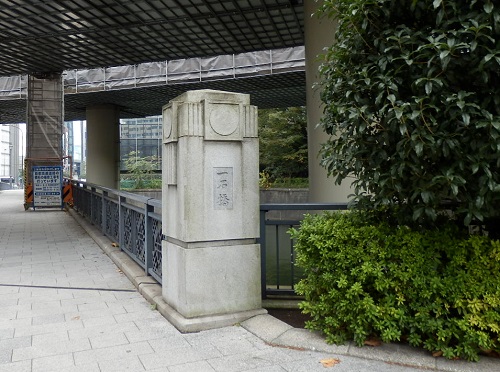
Originally, it is natural to have Chiyoda-ku on the west side of Sotobori-dori St. and Chuo-ku on the east side. However, the outer moat River used to be located on the west side of Sotobori-dori St., along the Sotobori-dori St., and since the center line is the ward, a part of the west side of Sotobori-dori St. (part facing Sotobori-dori St.) is in Chuo-ku.
In fact, at the Daiichi No. 2 Steel Building (currently under construction) to the north of Tokyo Station, the ward world passes through the building, and it seems that Yaesu 1-chome 10th and 11th blocks are set.
The address of the steel building is Marunouchi, Chiyoda-ku, but strictly speaking, the entrance along Sotobori-dori St. is Haz in Chuo-ku.
There are several buildings built on the reclaimed land of the outer moat River from Ichiishibashi to Kajibashi, but there is no indication of the address of the building at all along Sotobori-dori St. Is there any hesitation or hesitation in displaying this as Marunouchi, Chiyoda-ku in the part of Chuo-ku?
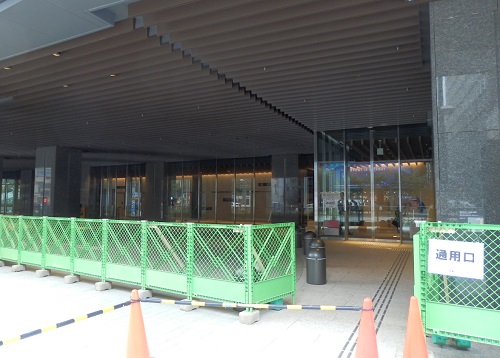
Steel buildings
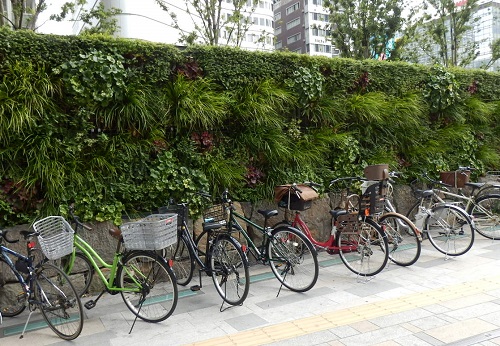
Restored stone wall
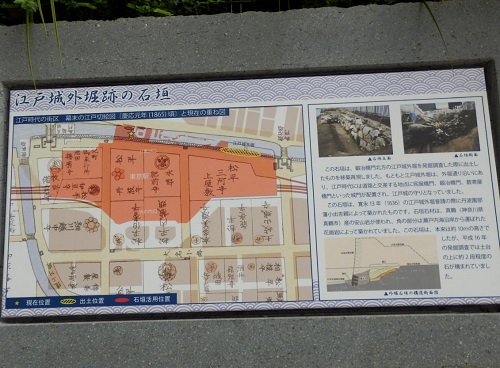
Commentary on Ishigaki

Exhaust tower of the underground capital high speed
This can be seen by passing the blacksmith bridge and eventually the highway appears on the ground.
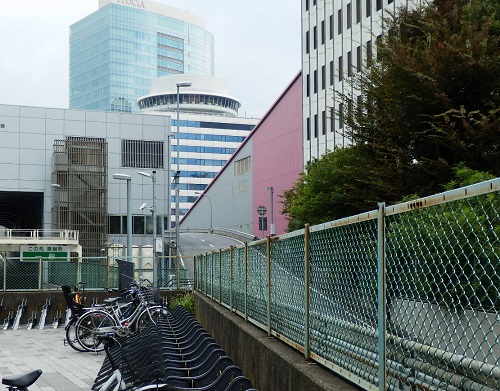
The "Tokyo Kosoku Doro" building is built on the reclaimed Soto Horikawa, where the top is used as a road and the bottom is used for shopping, and the road is hidden underground from the Kaji Bridge and invisible.
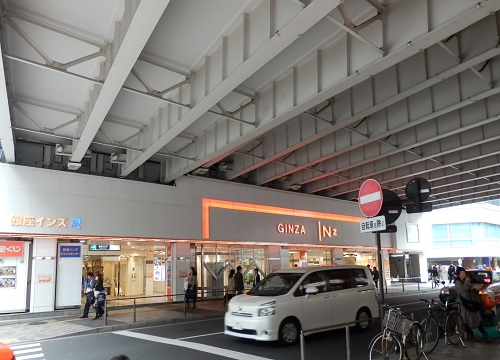 In other words, the buildings with shopping malls such as "GINZA INZ 123", "NISI GINZA" and "GINZA 5" were built on the ward of Soto Horikawa, and are now an extra area without an address. In other words, the buildings with shopping malls such as "GINZA INZ 123", "NISI GINZA" and "GINZA 5" were built on the ward of Soto Horikawa, and are now an extra area without an address.
However, there is no resident registration in this area and there is no problem such as resident tax paid to the ward, and there is no problem even if you do not specify an address because it is only a business establishment.
By the way, the fire department and the police have jurisdiction for each commercial facility. In the case of "NISHI GINZA", the fire department is Marunouchi, Chiyoda-ku, and the police are under the jurisdiction of Tsukiji, Chuo-ku.
In addition, mail arrives at the convenience address "4-1 Ginza, Chuo-ku" for postal mail.
"GINZA INZ" is "2-2 Ginza west, Chuo-ku" (currently there is no indication of Ginza west.)
"GINZA 9" is "8-10 Ginza, Chuo-ku", and Ginza may be attractive even though it is a convenience address.
In the past, "GINZA INZ" was a restaurant and food sales area under the name of "Yuraku Food Center", but at this time Frank Nagai's "Let's meet in Yurakucho" became a big hit, so at that time, Yurakucho had more brand power than Ginza?
"NISHI GINZA", famous for the Treasure Lottery Chance Center, deals with the latest trend of clothing under the name "Nishiginza Department", and "GINZA5" deals with items such as fashionable accessories under the name "Sukiyabashi Shopping Center", and these shopping malls were such a kind of thing that could be said to be pioneer in Japan.

Since these shopping malls are located on the reclaimed land of the outer moat River, will the ward boundaries between Chuo-ku and Chiyoda-ku be the center passage of these malls? 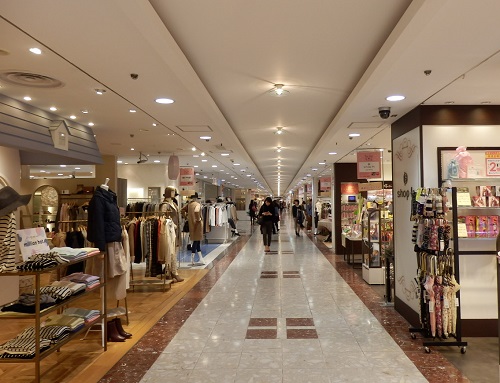
After passing through "GINZA5" and crossing Miyuki Street, the shopping mall ends and becomes "Ginza Corridor Street" lined with restaurants.
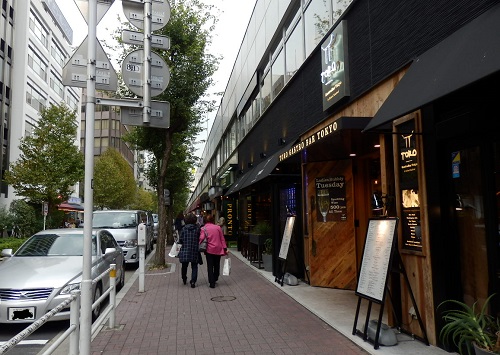
Eventually, at the police box in Tsuchihashi, the expressway turns to the left and becomes "GINZA9".
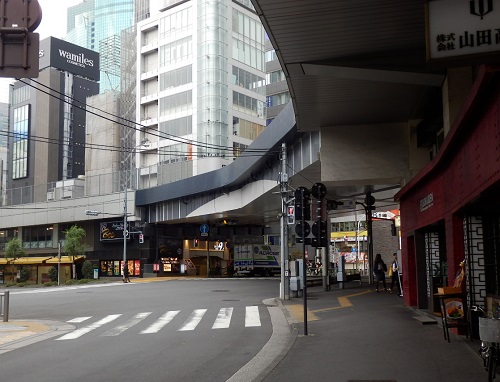
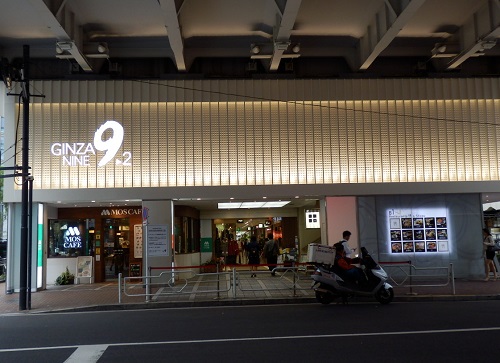
In the past, Soto Horikawa became the Shiodome River and was reclaimed, and "GINZA9" became the ward boundary with Minato-ku.
"Ginza 9-chome Mizukami" sung by a singer named Ichiro Kanbe in the 1980s became a big hit, but "GINZA9" was not given from there, and was initially named "Shimbashi Center". After all, it was attached because Shimbashi Station is close.
In fact, it seems that there were many small izakayas that served as hangouts for office workers in Shimbashi.
At present, there are many shops dealing with dresses of luxury bar moms and hostess in Ginza.
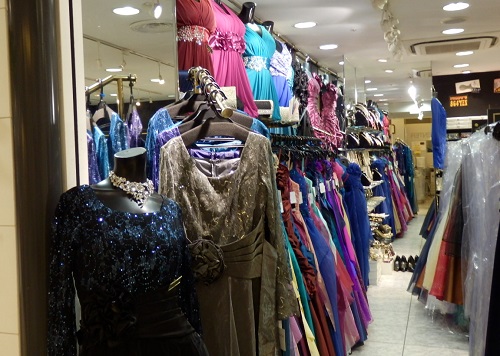
"GINZA9" also ends on Showa-dori, and the elevated capital city that passes through Kaigan-dori and above becomes a ward border with Minato-ku along the Hamarikyu Garden, and from Shiodome River to Tokyo Bay, Harumi Canal from Harumi Wharf to Toyosu, Koto-ku It becomes the ward boundary with. 。

Hamarikyu

From the Shiodome River to Tokyo Bay
[Shiraji]
Nov. 4, 2015 16:00
If you look downstream from Kamakura Bridge over the Nihonbashi River, you can see a sluice gate on the left bank.
This is the trace of Kawaguchi, where the former Ryuka River flows into the Nihonbashi River.

However, the Ryuka River was the Horikawa River, which was excavated by townspeople at their own expense as a fire protection zone after the great fire of the Meiryaku era (1657), until it was reclaimed in 1950 for post-war waste disposal .
Hongo, Koishikawa, and Kojimachi are said to be the source of the great fire in the Meiryaku era, but the fire momentum from Koishikawa burns the densely populated towns such as Nihonbashi, and the dead are said to be more than a quarter of the population of Edo. It is said that more than 100,000.
When Kanda became the source of fire, it was prone to a large fire due to the dry northwest wind in winter, and in fact, Kandasakumacho was a place where the fire was so large that it was called "Akuma-cho". It must have been inevitable that the river was dug.
The digging for fire prevention has been the boundary between Kanda Ward and Nihonbashi Ward since 1878, and has been the boundary between Chiyoda-ku and Chuo-ku even after being reclaimed after the war.
The surface of the sluice gate is a facility of the Waterworks Bureau, and the balustrade of the former Ryukan Bridge is preserved across Sotobori-dori St.
Yes. This bridge was replaced in 1926 (1926) and is the first reinforced concrete truss bridge in Japan.

The name of Ryukanbashi and the river was derived from the fact that there was a house of Ryuka Inoue, a tea priest of the Shogunate, in a town on the west side of this river.
The alley just behind the railing of Ryukanbashi was the Ryukangawa (moor), and this alley is still the ward of Chiyoda-ku and Chuo-ku.
Follow this alley for several hundred meters and pass through the guard of the JR Line. Above is the viaducts of the Taisho era, Showa and Heisei, as well as the Tohoku and Joetsu Shinkansen lines.
Located on the south side of Kanda Station, under the guard called Imagawa Koji, there are more than a dozen bars.
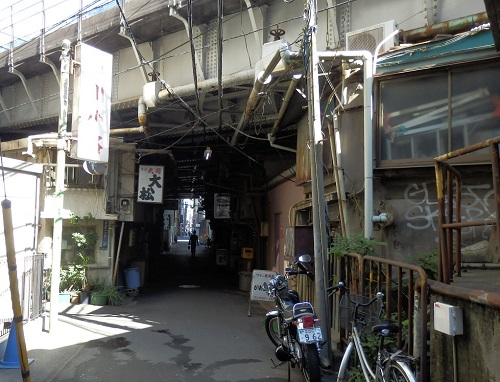
It is Imagawa Bridge where this alley, Ryukagawa River ruins intersect with Chuo-dori. (It is slightly different from the Imagawa Bridge intersection.)
Near this bridge, they sold baked confectionery made by putting flour dissolved in water in a mold. In other words, Imagawa Bridge is the birthplace of Imagawa-yaki.
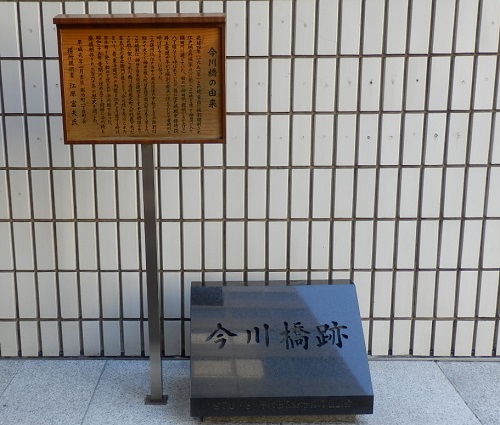
After crossing Chuo-dori, there is a small park in front of Showa-dori, and there is a monument buried in the Ryukagawa River. Showa-dori has to cross the pedestrian crossing bridge, but the alleys continue.
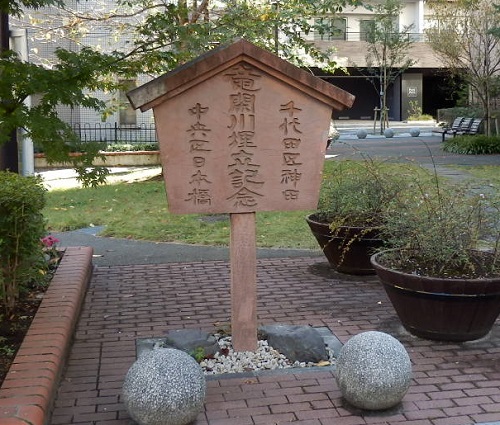

After crossing Ningyocho Street, you will find a park after Kodemmacho, and the ruins of the former Ryukagawa River end here.
This park, like the ward of Chiyoda-ku and Chuo-ku, has a different name from "Ryukan Children's Amusement Park" on the Chuo-ku side, and "Ryukan Children's Park" on the Chiyoda-ku side (laughs).


The alley continues from behind this park, but it is not the trace of the Ryuka River, but is the evidence? Both sides of the road are Higashi-Kamida, Chiyoda-ku. The road on the southeast side of this alley (a relatively wide one-way road) becomes the ward boundary. The Chuo-ku side is Bakurocho 1-chome.

Eventually, I went to Yasukuni Dori and thought that Watari Saemonbashi-dori was the ward, and for some reason, Chuo-ku was to the west side of one block.
 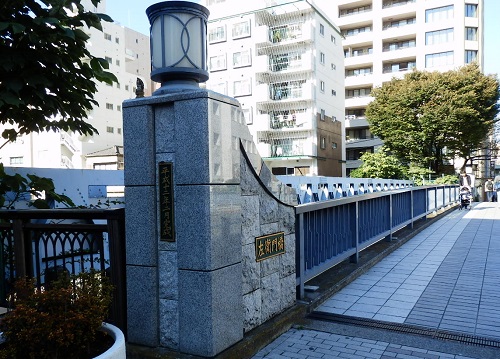
The Kanda River's Saemon Bridge, Asakusabashi, and Yanagibashi become the ward border with Taito Ward, go out to the Sumida River, become the ward border with Sumida-ku at Ryogokubashi, and the walk around the ward ends. It was a small one hour walk.
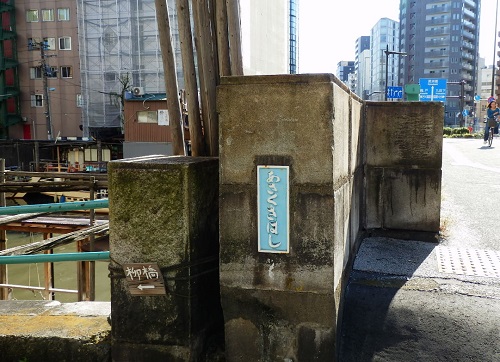


After that, from the downstream of the Sumida River, the Harumi Canal and Tokyo Bay will form a ward border with Koto-ku.
[Shiraji]
14:00 on October 5, 2015
Do you know Swan Bakery & Swan Cafe?
I think many people have seen it because it is lined with "Swan Cafe" and "Swan Bakery" next to the headquarters building of Yamato Transport Co., Ltd. facing Ginza 2-chome and Showa-dori.
At first glance, it looks only like a small cafe and bakery in Ginza, but in fact, this bakery and cafe are known for Kuroneko Yamato's courier service, and Yamato Transport Co., Ltd., which considers and operates the employment of disabled people It is a bakery & cafe.
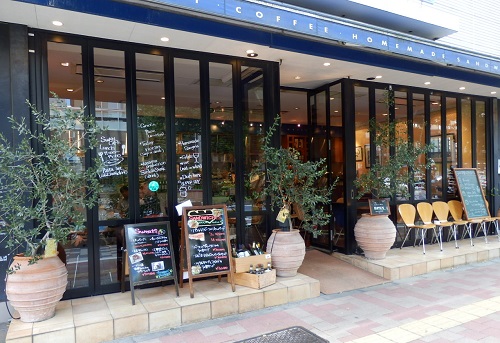
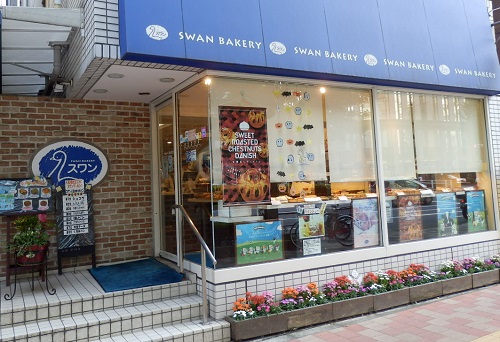
Concerning the current situation of being employed at extremely low wages compared to healthy people, Yamato Transport Co., Ltd. and Yamato Welfare Foundation for the purpose of employment and independence support for persons with disabilities (the majority of employees have mild disabilities). It is the first store of "Swan Cafe" and "Swan Bakery" operated by "Swan Co., Ltd." established by "Swan Co., Ltd."
Takaki Bakery, who has established a `` freshly baked delicious bread '' store concept and has been developing `` Andersen '' and `` Little Mermaid '' nationwide so that people with disabilities can obtain the technology and environment that can secure appropriate income. The concept was realized with the cooperation of
In June 1998, the "Swan Bakery" and "Swan Café" Ginza store opened as the first store, and now there are more than 24 "Swan Bakery" and "Swan Cafe & Bakery" chain stores in four directly managed stores nationwide. It seems that it is expanding around the country.
This "Swan" is of course attached from "Duck Children", which is difficult to see by Danish fairy tale writer Andersen.
"Swan Bakery" also handles Christmas cakes at the end of the year.
Of course, bread is baked with Andersen's technology, so it's delicious, but this shop's unique "Swan Madeleine" and "Duck Cookies" with cute brand seals are also perfect for souvenirs!
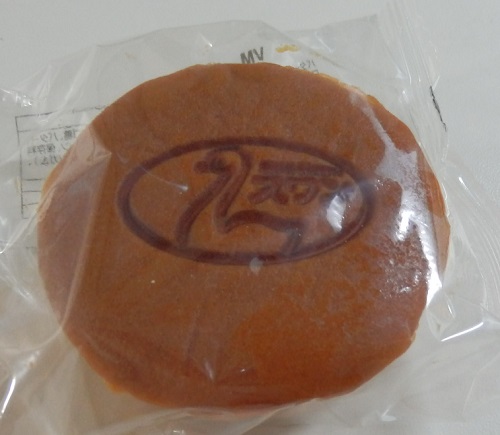 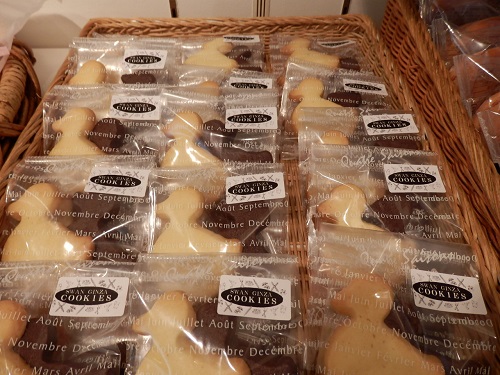
There is also a counter in the bakery where you can eat in, and there are drinks such as coffee.
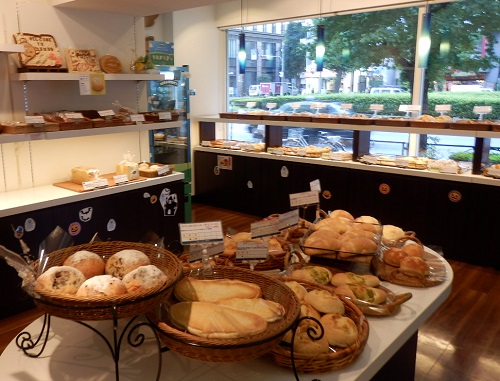
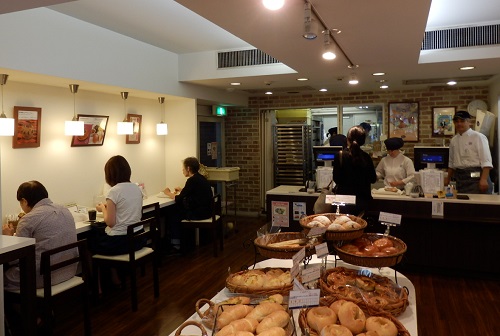
At the cafe, pasta, gratin, quiche, bowl, etc. are prepared for lunch, sandwiches, tarts, and millefeuilles made with seasonal vegetables and fruits, and at night you can enjoy beer, wine, whiskey and meals like a bar.

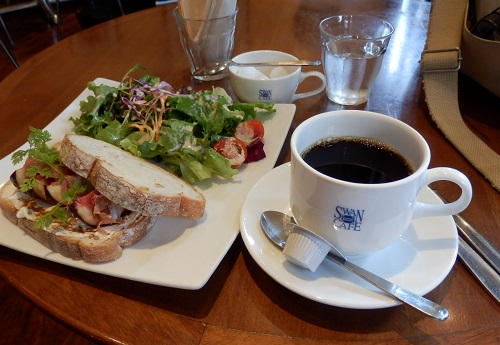
[Shiraji]
August 31, 2015 09:00
Did you know that Nihonbashi Honmachi is said to be a "medicine town"?
It seems that Nihonbashi Honmachi was lined with drug wholesalers in the Edo period.
Speaking of which, the buildings of many pharmaceutical companies such as Takeda Pharmaceutical, Daiichi Sankyo Co., Ltd. and Astellas are still lined up.
And there is also a "medicine museum" introduced today.
https://kusuri-museum.com/intro/
Although it is a "mini museum" that also serves as a PR for Daiichi Sankyo Co., Ltd., there is not much corporate color, and from cultural things such as "history of drug invention and discovery" and "efficiency of medicine" to the latest science and technology such as "future of medicine" It is well exhibited so that elementary school students and adults can enjoy learning from them.
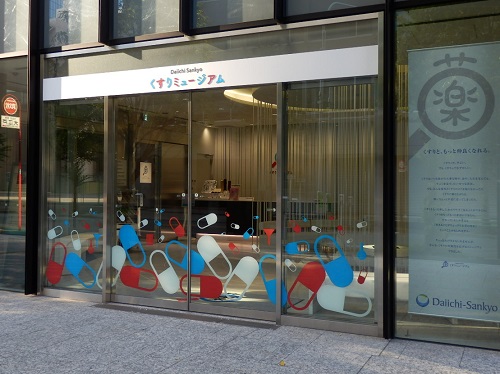
I can't give a detailed introduction because photography is prohibited in the hall, but why don't you take a look at the chot when you have extra time to meet during shopping?
During the summer vacation, elementary school students who are having trouble with homework for free study should hurry! (laughs)
In addition to this "medicine museum", there are many "mini museums" in Chuo Ward.
In many cases, each company has its headquarters in Chuo-ku and serves as a PR for improving the image of the company, but it is free, and even though it is a "mini museum", what is made by top companies is certainly rich.
At the same time, we also recommend the gallery, which is a mini-museum.
[Shiraji]
July 31, 2015 18:00
In Nihonbashi Honmachi, there is a long-established Japanese paper store "Ozu Washi" that has been in business for over 360 years.
It is said that this was the first time that Ozu Seizaemon Nagahiro founded a paper wholesaler "Ozu Seizaemon Store" in Temmacho, a commercial area in Edo (current location) in 1653 in the Shoo era.
The new store, completed in 2015, is surrounded by fences like a store from the Edo period, with Japanese shop curtain at the entrance.
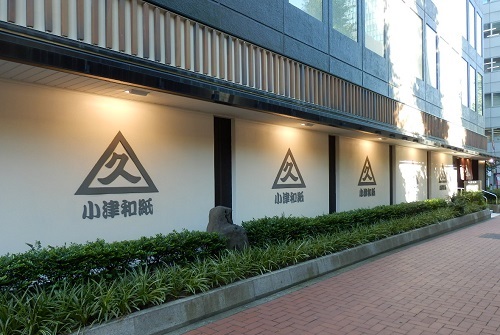
On the first floor, there is a corner called "Washi Experience Studio" where you can experience paper making in front, and on the left hand side is a store where products using Japanese paper and Japanese paper from all over Japan are lined up.
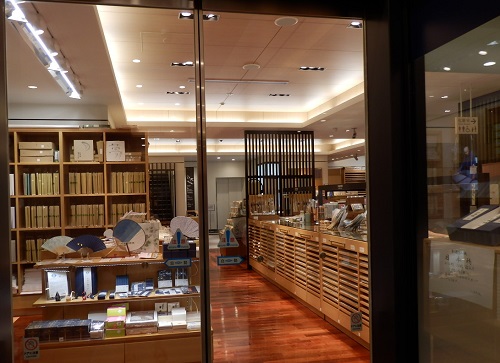
The second floor is the Ozu Cultural Class and the Ozu Gallery, and the third floor is the Ozu Historical Museum and the Mini Museum, which displays the history, raw materials, manufacturing methods and production areas of Japanese paper.
Of course, the "Ozu Historical Museum" is a collection of exhibits that introduce the history of "Ozu Washi", but it seems to be a long-established store that has been in business for more than 360 years, and the exhibits include customs of the Edo period and the lifestyle of merchants.
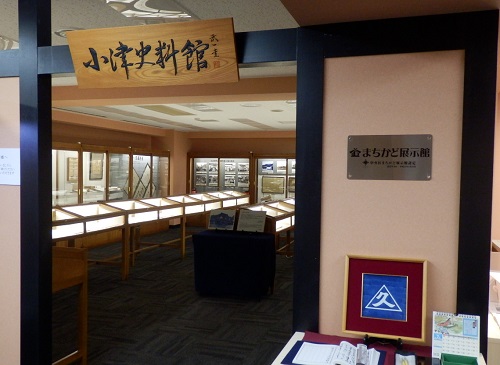
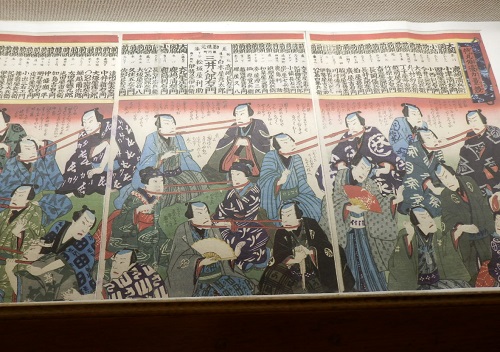
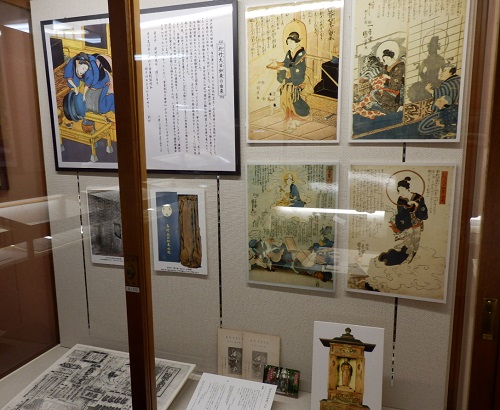
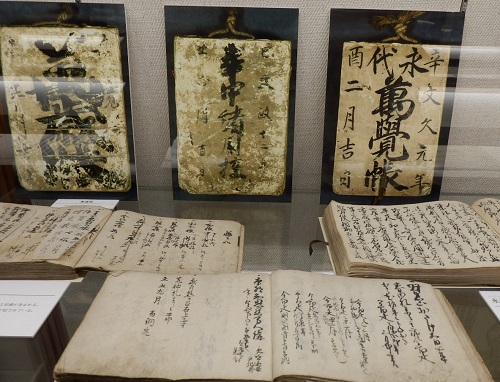
On the third floor, in addition to the Ozu Historical Museum, there is also a gallery of works made of Japanese paper and a mini-museum where you can gain knowledge about Japanese paper, which is also recommended for elementary school studentsIntangible Cultural Property during summer vacation!


Mr. Banzu gave me a lot of explanations and also showed me a video recording of the process of actually making Japanese paper at the gallery.

Also, on the first floor of the store, you can experience the original handmade Japanese paper experience even by family members, friends or one person (reservation priority).
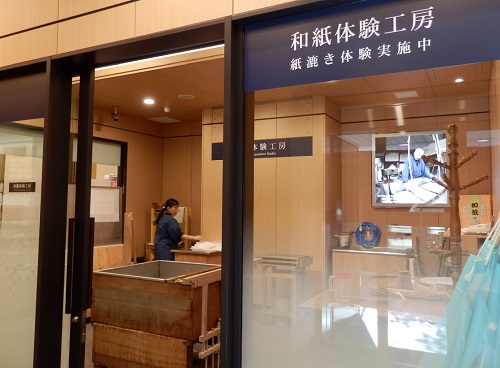
Japanese calligraphy, Chigiri-e, pressed flowers, seal engraving, Monochrome ink painting, colored pencil drawings, picture letters, calligraphy, incense, dynasty paper, and more. (There is also a 2-hour hands-on workshop.)
Wouldn't it be fun to visit such a mini-museum with your children during summer vacation?
〒103-0023 3-6-2, Nihonbashihoncho, Chuo-ku, Tokyo
TEL: 03-3662-1184 FAX: 03-3663-9460
Business hours From 10:00 to 18:00 Closed: Sunday
[Shiraji]
June 30, 2015 09:00
Shitamachi Fun Crafts Museum is a traditional Japanese craft shop in Ningyocho!
On the first floor of the building on the right right after entering the road from Ipponzutengu Shrine in amazake Yokocho from Ningyocho-dori, you can easily see it.

The shop is full of items that make use of traditional Japanese craft techniques such as kimonos, obis, braids, and bags, as well as hair ornaments.
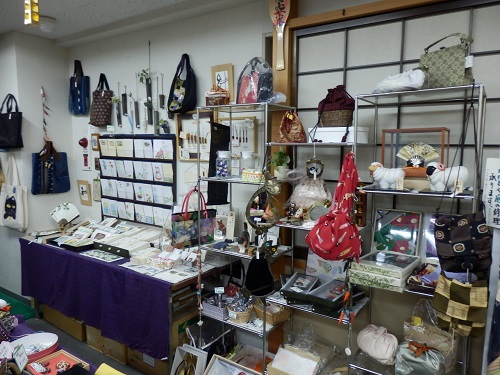
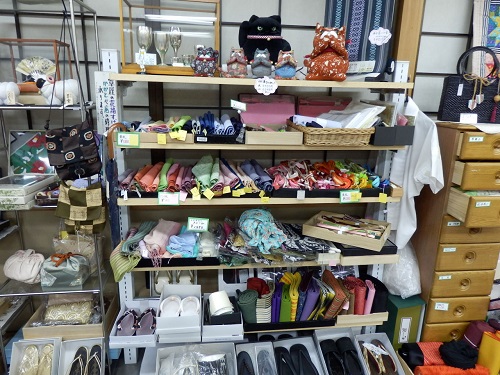
It is a shop that mainly focuses on recycled kimono and handmade crafts founded in 1994, but originally it was a kimono shop, and the eyes of seeing the goods are certainly recycled, but kimono made with real traditional techniques Although it is recycled, kimonos and obis are sold at a surprising price. Of course, there are also new products.
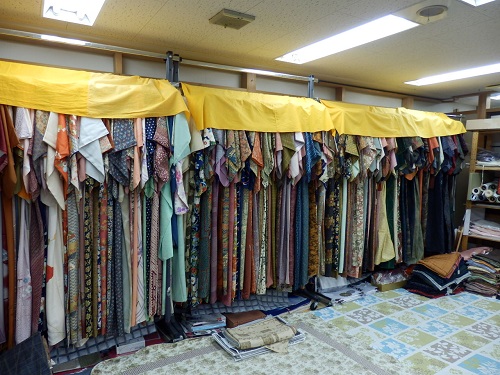
It's a shop with the thought that you don't want to break down the culture and skills of Japanese clothing somehow.
Recommended for those who are interested in Japanese clothing or want to wear kimono.
In addition, as souvenirs overseas, we also have small items such as Japanese accessories, Japanese decorations, and towels that can feel the elegance of Edo.
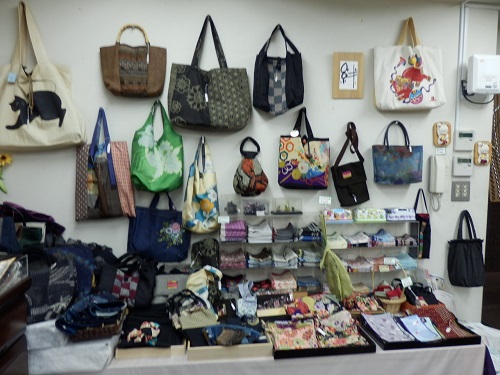
In even-numbered months, a free dressing class is held. (No matter how many times you participate, it seems to be free.)
In addition, in the "petit dressmaking classroom", you can learn simple "sleeve length", "sleeve straight", "semi collar", etc., and you can make your own original band etc. There are also classrooms such as twice a month).
Those who are interested in kimono! Why don't you take a look at it?
Shitamachi Fun Crafts Museum http://www.matae.com/about/
〒103-0013 Horiguchi No. 2 Building 1F, 2-2-6 Nihonbashi Ningyocho, Chuo-ku, Tokyo 103-0013
TEL: 03-3664-3780
FAX: 03-3664-5548
|
Links
|
In other words, the buildings with shopping malls such as "GINZA INZ 123", "NISI GINZA" and "GINZA 5" were built on the ward of Soto Horikawa, and are now an extra area without an address.



